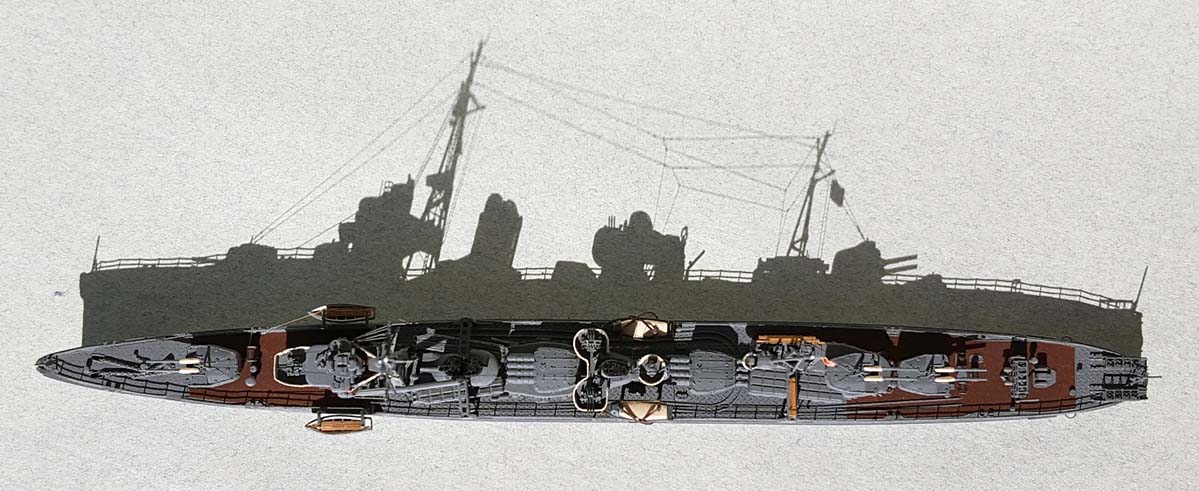
1/700 Yukikaze, July, 1943 (Aoshima)
|
by Dan Kaplan |

1/700 Yukikaze, July, 1943 (Aoshima)
Her extensive war record, survival of the war, and service longevity have made Yukikaze among the most famous of the ships of the Imperial Japanese Navy. There have been countless builds of Yukikaze, and many of her Kagero class sisters, in a variety of scales on this site and others. Of those, almost all are in either her as-built configuration of 1940-1942 or in her final configuration of 1945.I, however, have only built two Kagero class ships in 1/700, none of which were her, and that was over a decade ago. With a hankering to super-detail a couple of Kagero types, I chose a mid-war configuration for Yukikaze. This fit for a Kagero type is infrequently modeled, probably due to rarity of information as well as a misunderstanding of what the few available photographs actually show.
In May, 1943, Yukikaze was refit at Kure Naval Yard. She added a twin 25mm AA mount on a bandstand in front of her bridge, replaced the two twin 25mm AA mounts to either side of funnel number two with triple 25mm AA mounts, and had passive radar detectors (ECM) mounted to her bridge faces. She also added roll-off depth charge racks at her stern and had her foremast partially modified in anticipation of mounting a Type 22 radar, which was subsequently added in September. Production of these radars was slow, and many ships did not receive theirs until well into 1944. The changes to the foremast in anticipation of radar was not unique to Yukikaze. Several destroyers were so altered when they arrived for their refits throughout mid to late 1943.
There is a photo of her taken at Rabaul in July of 1943, the day after Yukikaze and her sisters won a tactical victory at the Battle of Kolambangara. (FYI, those ECM devices were known as Gyaku-tan. This battle was the first instance of their use; Yukikaze picked up USN radar emissions 30 minutes prior to the actual encounter and alerted her task force.) While the Rabaul photo is not of the highest quality, all of the fit changes can be seen in it. However, it is the arrangement of the foremast that seems to throw many researchers and modelers off, both in Japan and elsewhere. It’s been interpreted to show many things, but, in fact, only the platform upon which the Type 22 radar was eventually mounted and the additional, light cross-bracing under it was actually installed. There is no radar, and the mast still retains all three of its original legs and configuration. Other photos exist of Nowaki receiving the same type platform in drydock, August, 1943, in eventual anticipation of her Type 22 radar.
I tend to think of this fit as her ”maximum armament” fit. I super-detailed an Aoshima Kagero class kit accordingly with an extensive variety of photo-etch and aftermarket accessories.
